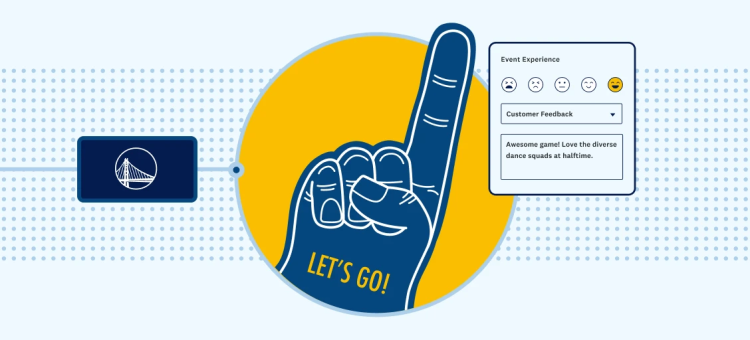To celebrate the launch of the SurveyMonkey Technology Ecosystem Program (STEP), we’re highlighting one company that we’ve partnered with—in one way or another—every day in August. Check out all our integrations partners here.
Since the coronavirus outbreak, “business as usual” has pretty much flown out the window. The past few months have been a lesson in adaptation for many American workers, from those who continued to go to their usual workplace to those who shifted to remote work.
Along with our partners at Microsoft, we set out to learn more about how workers have adjusted and how work as we know it is changing. How have workers communicated during the pandemic? How have they been spending their time, especially those working at home? Do they see their current situation continuing through the fall? What about through the new year?
To see Microsoft’s full research on remote work, check out The Future of Work.
SurveyMonkey surveyed over 3 thousand workers and collected valuable data on how the virus has impacted their engagement, productivity, and social ties. Since the start of the coronavirus:
- More than twice as many workers say their connection with colleagues has declined as say it has improved (34% vs. 15%), while 45% say it has stayed the same
- 28% of workers say their engagement level at work has declined, versus 18% who say it has improved and 45% who say it has stayed the same
- 25% of workers say that their productivity has declined, versus 20% who say it has improved and 51% who say it has stayed the same
Using Microsoft teams?
Integrate with SurveyMonkey to create surveys or polls directly in Microsoft teams. Collect feedback, arrive at consensus more quickly, and check in on your teammates in real-time.
When we dig into this research, as well as Microsoft’s own findings on remote work, it helps paint an even clearer picture of workers’ experience. Here are some key takeaways:
Video meetings have increased, and they’re tiring everyone out
According to our research, more than 40% of workers say they’re spending more time on video calls, emails, and instant messaging since the start of the coronavirus outbreak. Among the remote work crowd, 60% say they’re spending more time on video calls now than before.
So what’s the effect of all those video calls? Microsoft found that if you feel drained after a virtual meeting, there's a good reason. Brainwave markers associated with overwork and stress are significantly higher in video meetings, compared to non-meeting tasks like writing emails. The research suggests that several things lead to video meeting fatigue:
- Having to focus continuously on a screen
- Fewer non-verbal cues that help you read the room
- Screen sharing without seeing the people you’re interacting with
(Psst! To help combat meeting fatigue, Microsoft suggests scheduling regular breaks every two hours, limiting meetings to 30 minutes, and using tools like Together Mode to prevent meetings from being too impersonal.)
Socializing is down but empathy is up
Despite the uptick in virtual meetings, it’s been harder for workers to shoot the breeze with their colleagues. In fact, 53% of workers say they’re spending less time socializing with coworkers since the start of the coronavirus. Even among workers who are still going into their usual workplace, a 48% plurality say they’re spending less time socializing. For remote workers, the number is even higher at 59%.
However, while socializing may have taken a hit, things aren’t all bad when it comes to connections with colleagues. Microsoft found that 62% of workers said they feel more empathetic toward their colleagues now that they have a better view of life at home.
Work/life balance is harder for Gen Z and millennials
Over half of the parents Microsoft surveyed (54%) said it’s been hard to balance household demands while working from home. However, this challenge becomes clearer between generations. 52% of respondents under 40 years old said that balancing work and family responsibilities has been challenging, compared to 36% of respondents over 40. As Microsoft noted, this may be because millennials and Gen Z are caring for young children or sharing work and living spaces with roommates.
8 in 10 workers can keep up their current situation for the next year
It’s hard to speak about the next year with certainty, however we found that a stunning 80% of workers say they are optimistic that they could continue doing their job under their current working conditions for the next year, including nearly half (48%) who describe themselves as “very optimistic.” And those who have adapted to working remotely are actually more likely to be optimistic than those who have continued going to their usual workplace (86% vs. 75%).
It’s not just that remote workers believe they can keep it up through the new year, they want their current flexibility to become permanent. Microsoft found that 71% of the employees and managers reported a desire to continue working from home, at least part-time, post-pandemic.
These are undeniably challenging times for workers. While flexibility is key for both workers and employers, so is benchmarkable data. With insights on how people are staying connected (or not) with their job and their colleagues, we can get a better idea of the coronavirus’s impact—and perhaps begin to reimagine work beyond the pandemic.
Methodology: SurveyMonkey data come from a SurveyMonkey online poll conducted July 24-28, 2020 among a national sample of 3,369 employed adults in the U.S. Respondents were selected from the more than 2 million people who take surveys on the SurveyMonkey platform each day. The modeled error estimate for this survey is plus or minus 2.0 percentage points. Data have been weighted for age, race, sex, education, and geography using the Census Bureau’s American Community Survey to reflect the demographic composition of the United States age 18 and over.




